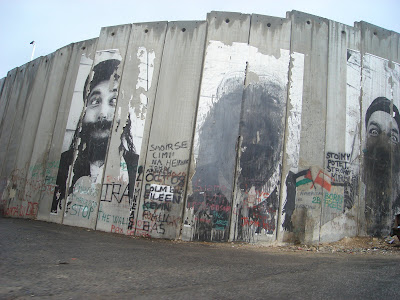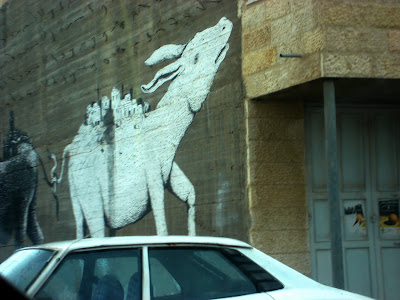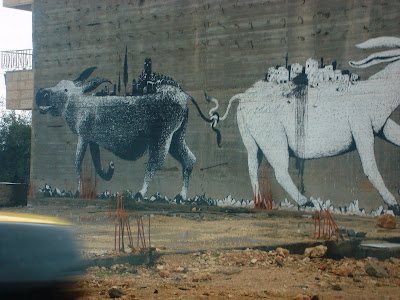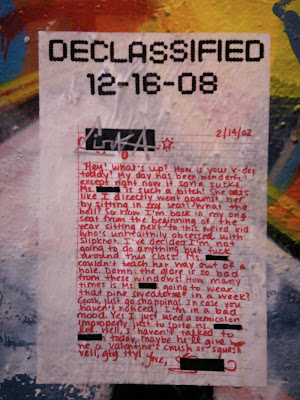Public Movement is an Israeli performance group. The action you see below was made by them in Łódź, Poland.
A short explanation: before WW2, Łódź used to have a very large Jewish minority. The Jews were, among others, the owners of a significant part of the textile industry thriving in the city. Today, there are practically no more Jews there - and no more industry as well (although the industry did go on until the 70's, I believe). It is a poor and degraded city, with a lot of social problems, and where antisemitism is still present (although the vast majority of the inhabitants have never seen a Jew).
It is one of the very few places I know where one can still find antisemitic slogans on the walls.
So here you have it: the Israelis arrive and correct the Star of David. They basically make a grafitti of how it should look like, and put the correct form over the incorrect one.
And a few little ideas:
- The grafitti they choose to work with are not openly antisemitic. They simply replace one of the letters of the name of a soccer club (ŁKS) with a Star of David. So this is a "neutral" correction on a "neutral" sign.
- The ritual. Ah, the ritual. Turns it all into an action of purity. Precious.
- Notice one other, much more hidden, interpretation: the Jews are back in town. They are here, after our land. They put their stamp on the walls. They claim what is theirs (the club, the building). They are tagging their city.
- But one idea I think is crucial, and might be overlooked in all this will to interpret every single aspect of the work. Public Movement seems to be saying "Yes, this is who we are. We see no reason to be ashamed of it. Do you? Are you not embarrassed to have thought this was inappropriate or even silly, in any way?"
This is some brilliant playing with street art, semiotics, identity and politics.
The one question that I find problematic is - yes, this is on the spot. But for whom? Who is the audience? Is it public art, or just private art in public space? Or maybe it is public art, only for the audience that is reading about it now? So where does that leave the people who walk by this daily? Do we expect them to have a surge of initiative and paint over the whole signs? Or are we, deep inside, enjoying the fact that it's still there, everything is just the same, while we, the smart ones, know and watch?
I really do not know. I do not have better solutions. This, of course, is not a solution either - it is highliting the question(s). But what are we to make of this insistent neutrality right in the middle of a political issue? Is it a curse, the curse of constant distance? Or the blessing of a delicately balanced gesture, for once?












